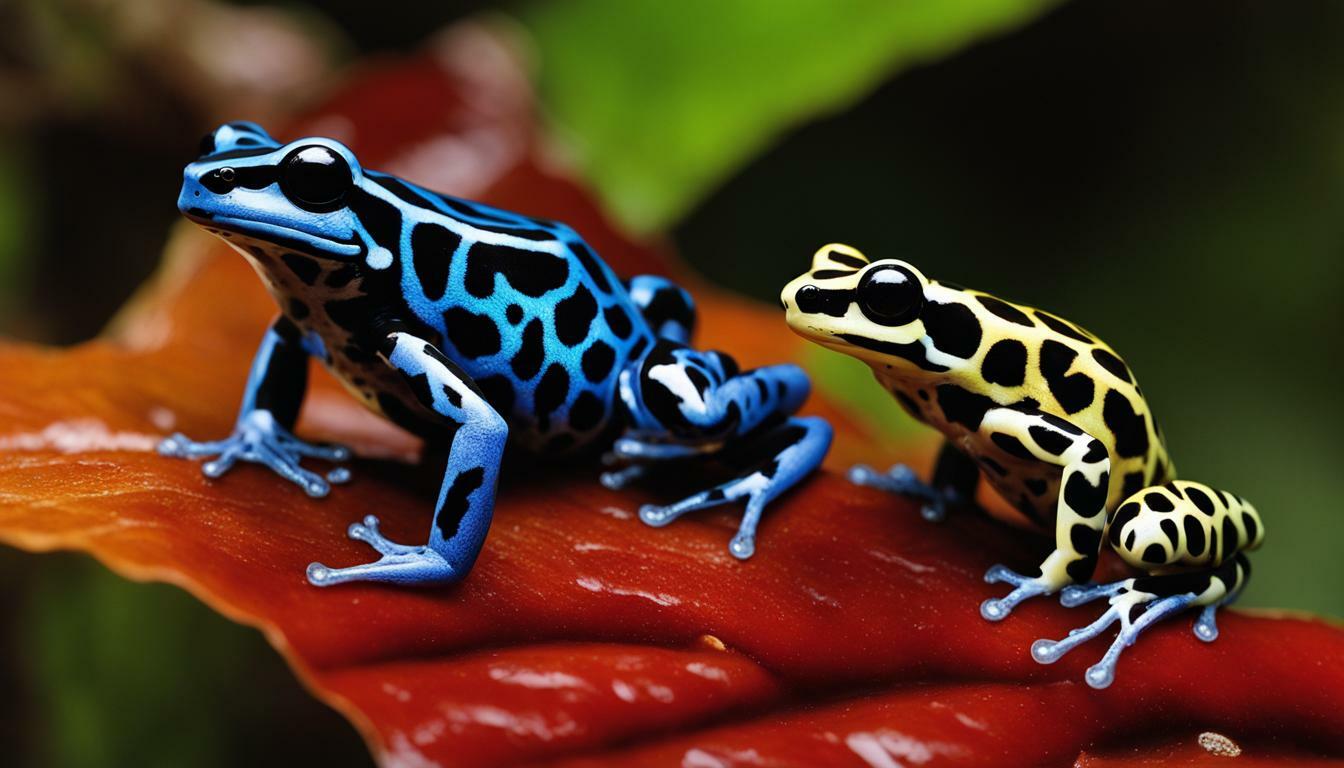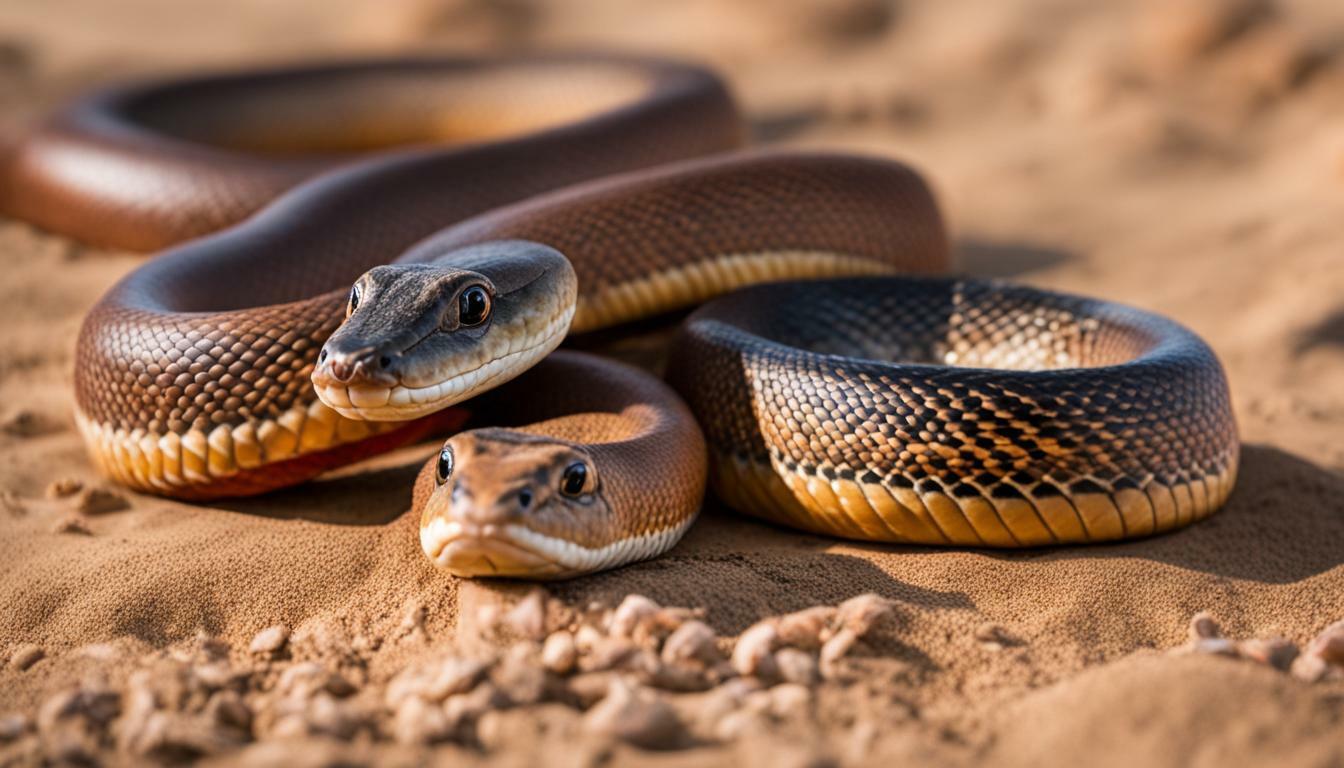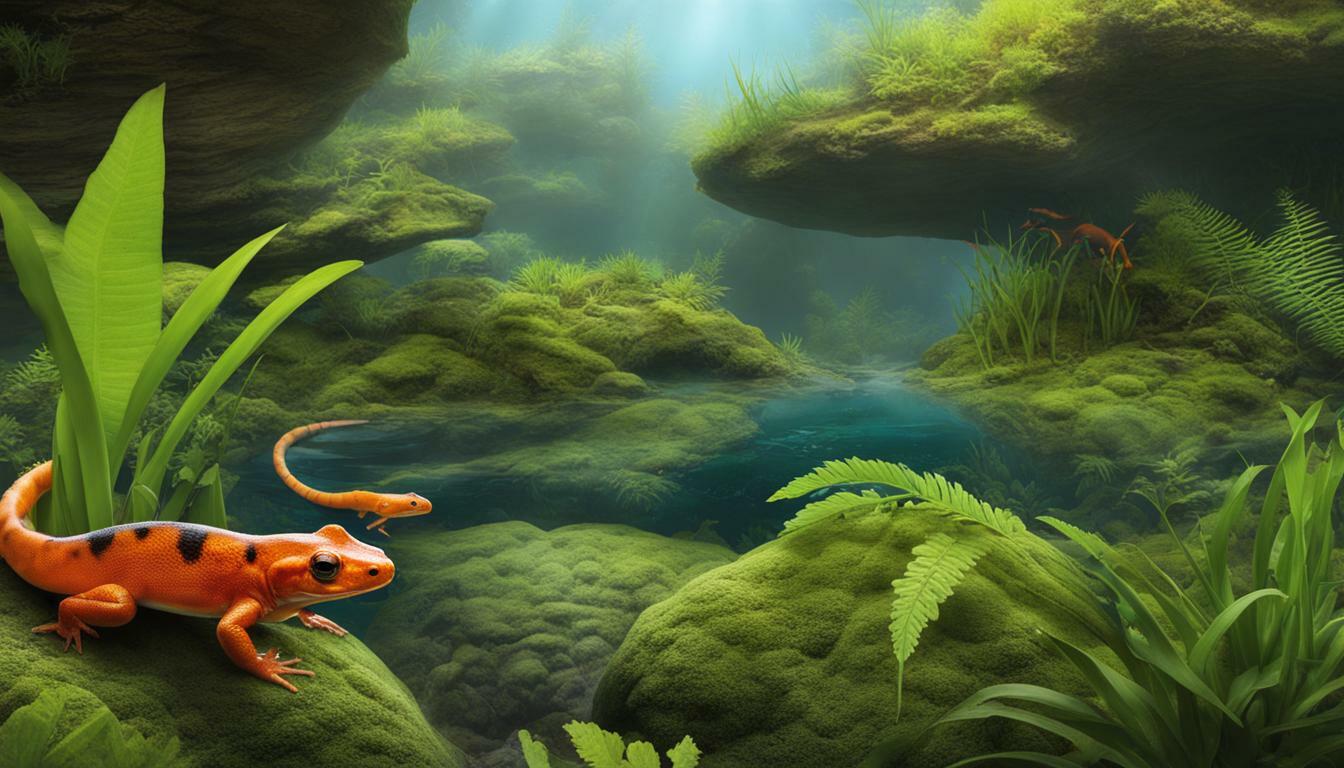Poison dart frogs and mantellas are both fascinating species of amphibians, but they have distinct characteristics that set them apart from each other. Mantellas are endemic to the island of Madagascar and belong to the family Mantellidae. They are known for their vibrant coloration and are diurnal, meaning they are active during the day. Poison dart frogs, on the other hand, are mainly found in South America, particularly in rainforests. Like mantellas, they also have striking coloration, but they are primarily known for their toxic skin secretions.
Both poison dart frogs and mantellas are small in size and feed on insects. However, keeping and breeding mantellas can be more challenging compared to poison dart frogs. Mantellas have specific habitat requirements and are more sensitive to changes in their environment. In terms of temperature preferences, mantellas thrive in temperatures around 65-70 degrees Fahrenheit, while poison dart frogs prefer temperatures around 70-75 degrees Fahrenheit.
Overall, both mantellas and poison dart frogs exhibit fascinating and unique characteristics that make them popular choices for amphibian enthusiasts. Their vibrant coloration, toxic skin secretions, and specialized adaptations are just some of the factors that contribute to their appeal. Despite their differences in habitat and care requirements, both species provide an opportunity for nature lovers to appreciate the diversity and beauty of amphibians.
Key Takeaways:
- Mantellas are endemic to Madagascar, while poison dart frogs are primarily found in South America.
- Mantellas are diurnal and live in various habitat types in Madagascar, while poison dart frogs are commonly found in rainforests.
- Both species have vibrant coloration and toxic skin secretions.
- Mantellas can be more challenging to keep in captivity and breed compared to poison dart frogs.
- Mantellas prefer temperatures around 65-70 degrees Fahrenheit, while poison dart frogs thrive in temperatures around 70-75 degrees Fahrenheit.
Geographic Distribution
Poison dart frogs are primarily found in Central and South America, while mantellas are endemic to the island of Madagascar. These two species of brightly colored frogs have distinct geographic distributions that add to their uniqueness.
In Central and South America, poison dart frogs can be found in countries such as Brazil, Colombia, Ecuador, and Peru. They thrive in the lush rainforests and tropical habitats of these regions. These frogs have evolved to develop vibrant colors as a warning to predators about their toxic skin secretions. Their striking hues serve as a visual deterrent, indicating that they are not suitable prey.
Mantellas, on the other hand, are native to the island of Madagascar, located off the southeastern coast of Africa. These frogs have adapted to the diverse range of habitats found on the island, including rainforests, swamps, and even arid areas. With their distinct coloration and patterns, mantellas are a prominent genus of aposematic frogs in the family Mantellidae.
| Poison Dart Frogs | Mantellas |
|---|---|
| Found in Central and South America | Endemic to the island of Madagascar |
| Thrives in rainforests and tropical habitats | Adapts to rainforests, swamps, and arid areas |
| Brightly colored with toxic skin secretions | Distinct coloration as a genus of aposematic frogs |
These distinct geographic distributions contribute to the allure of both poison dart frogs and mantellas. Whether you find yourself in the lush rainforests of South America or the unique landscapes of Madagascar, encountering these fascinating amphibians is sure to be a memorable experience.
Physical Appearance and Coloration
Both poison dart frogs and mantellas exhibit vibrant coloration, but there are distinct features that differentiate them from each other. Mantellas, endemic to the island of Madagascar, are known for their diverse range of bright colors, including shades of red, orange, yellow, and green. Their striking coloration serves as a warning to potential predators, as it indicates their toxicity. In contrast, poison dart frogs found in Central and South America boast a mesmerizing array of patterns and hues, such as blue, black, green, and yellow. Their intricate color patterns are a form of aposematic coloration, warning predators of their highly toxic skin secretions.
When it comes to size, both species are relatively small, with poison dart frogs ranging from 1 to 6 centimeters and mantellas averaging around 2.5 to 3.5 centimeters in length. However, there are notable differences in physical features. Mantellas have slender bodies, long, slender limbs, and adhesive toe pads, enabling them to move efficiently on the ground. Poison dart frogs, on the other hand, have a stockier build, shorter limbs, and webbed toes, which aid in their arboreal lifestyle, allowing them to navigate their rainforest habitat with ease.
Another key distinction between the two lies in the presence of certain physical attributes. Mantellas possess an elongated snout, which helps facilitate their feeding on small invertebrates. Some species also have enlarged toe pads, assisting them in gripping onto surfaces and climbing. Poison dart frogs, in contrast, have a head that appears rounded, and their skin can be bumpy or smooth depending on the species. These variations in physical characteristics contribute to the overall uniqueness and charm of each species.
It is important to note that while both poison dart frogs and mantellas exhibit vibrant coloration, not all species within each genus display the same patterns or hues. The specific coloration and physical attributes mentioned here are generalizations and may vary depending on the species.
Behavior and Habitat
Poison dart frogs and mantellas exhibit different behaviors and have specific habitat requirements that suit their natural lifestyles. Mantellas, being diurnal frogs, are active during the day and prefer to spend their time on the ground. They are known for their agility and are skilled jumpers, allowing them to navigate the forest floor with ease. Mantellas are also territorial and can display aggressive behavior towards other frogs of the same species or similar appearance.
On the other hand, poison dart frogs are also diurnal but are more arboreal, spending a significant amount of time climbing trees and vegetation. They are excellent climbers and have sticky toe pads that assist in maneuvering through their rainforest habitats. Interestingly, poison dart frogs acquire their toxic skin secretions from their diet in the wild, primarily consuming ants and other small invertebrates that contain alkaloids.
For both frog species, their natural habitats are crucial for their overall well-being. Mantellas are found exclusively in Madagascar, inhabiting various regions such as rainforests, marshes, and even drier habitats like savannahs. Meanwhile, poison dart frogs are native to Central and South America, with the majority residing in the Amazon rainforest. They prefer dense vegetation, leaf litter, and damp environments near streams or bodies of water.
In summary, mantellas and poison dart frogs have distinct behaviors and habitat preferences. While mantellas are terrestrial, active during the day, and territorial, poison dart frogs are arboreal, climbing trees, and acquiring toxins from their diet. Mantellas inhabit various habitats in Madagascar, while poison dart frogs thrive in the dense vegetation of Central and South American rainforests.
Captivity and Breeding
While both poison dart frogs and mantellas are popular choices for amphibian enthusiasts, there are certain factors to consider when keeping them in captivity or attempting to breed them. Both species require specialized care to ensure their health and well-being.
One key consideration is the setup of their enclosures. Poison dart frogs are arboreal and require a taller terrarium with plenty of vertical space for climbing, while mantellas are terrestrial and prefer a more horizontal setup with ample space to explore. Providing a variety of hiding spots, such as plants, branches, and rocks, is important for both species to create a natural and stimulating environment.
Another factor to consider is the diet and feeding habits of each species. Both poison dart frogs and mantellas primarily feed on small insects, such as fruit flies, pinhead crickets, and springtails. It is crucial to provide a diverse diet that meets their nutritional needs. Additionally, supplementing their food with calcium and other essential vitamins is essential for their overall health.
Table: Diet Recommendations for Poison Dart Frogs and Mantellas
| Species | Recommended Diet |
|---|---|
| Poison Dart Frogs | Fruit flies, pinhead crickets, springtails, small beetles |
| Mantellas | Fruit flies, pinhead crickets, small beetles, termites |
Lastly, breeding these species can be a rewarding yet challenging endeavor. Both poison dart frogs and mantellas require specific conditions to reproduce successfully. It is important to mimic their natural breeding habitats, which involve temperature fluctuations, humidity levels, and the presence of suitable breeding sites such as leaf litter or water pools. Regular monitoring of the breeding pairs, as well as providing proper nutrition and veterinary care, is essential to increase the chances of successful breeding.
Overall, keeping poison dart frogs and mantellas in captivity can be a fulfilling experience for amphibian enthusiasts. However, it requires careful attention to their unique needs and behaviors, as well as providing appropriate housing, diet, and breeding conditions. By providing a suitable environment and meeting their specific requirements, these colorful and fascinating frogs can thrive and bring joy to their keepers.
Temperature Preferences
Maintaining the appropriate temperature is crucial for the health and thriving of poison dart frogs and mantellas, as they have specific temperature preferences. While both species enjoy warm climates, there are slight variations in their ideal temperature ranges.
For mantellas, a temperature range of 65-70 degrees Fahrenheit (18-21 degrees Celsius) is ideal. They thrive in slightly cooler temperatures compared to poison dart frogs, reflecting their native habitat in the forests of Madagascar. It is important to provide them with a cooler environment to ensure their overall well-being.
Poison dart frogs, on the other hand, prefer slightly higher temperatures. They thrive in temperatures around 70-75 degrees Fahrenheit (21-24 degrees Celsius). This temperature range mimics the warm and humid conditions of the rainforests in South America, where they are predominantly found. Providing these frogs with the warmth they need is essential for their activity levels and overall health.
It is worth noting that maintaining a stable and consistent temperature is crucial for both species. Sudden fluctuations or extremes in temperature can be detrimental to their health. It is recommended to use a reliable thermometer and a heating system to ensure the temperature remains within the appropriate range for the well-being of your poison dart frogs and mantellas.
| Species | Ideal Temperature Range (Fahrenheit) | Ideal Temperature Range (Celsius) |
|---|---|---|
| Mantellas | 65-70°F | 18-21°C |
| Poison Dart Frogs | 70-75°F | 21-24°C |
Unique Characteristics and Adaptations
Both poison dart frogs and mantellas possess remarkable features and adaptations that contribute to their survival and ecological niche. These adaptations, coupled with their vibrant coloration, make them fascinating creatures to study and admire.
Coloration
One of the most striking characteristics of both poison dart frogs and mantellas is their brilliant coloration. These colors serve as a warning to potential predators that they are toxic or venomous. The bright hues, ranging from vibrant reds and blues to bold yellows and oranges, act as a visual deterrent, conveying that they are dangerous to consume. This aposematic coloration is a unique adaptation that protects them from predation.
Secretions
Both species produce toxic skin secretions, although the nature and potency of these secretions differ. Poison dart frogs, as their name suggests, have highly toxic skin secretions that they acquire from their diet in the wild. These secretions contain alkaloids that can cause paralysis or even death in potential predators. Mantellas, on the other hand, have less potent secretions compared to their South American counterparts, but they can still cause irritation or discomfort.
Behavior
Both poison dart frogs and mantellas exhibit interesting behavior patterns. They are primarily diurnal, meaning they are most active during the daytime. This behavior allows them to take advantage of the abundant sunlight for thermoregulation and feeding on their preferred prey, which consists mainly of small insects.
In addition to their diurnal nature, poison dart frogs and mantellas are also terrestrial, spending most of their time on the ground rather than in trees or water. This adaptation allows them to navigate the forest floor efficiently and find suitable hiding places to avoid predators.
| Species | Geographic Distribution | Preferred Temperature |
|---|---|---|
| Poison Dart Frogs | Mainly found in rainforests in Central and South America | Around 70-75 degrees Fahrenheit |
| Mantellas | Endemic to the island of Madagascar | Around 65-70 degrees Fahrenheit |
With their captivating coloration, unique adaptations, and intriguing behavior, both poison dart frogs and mantellas continue to captivate the hearts of amphibian enthusiasts. These small but extraordinary creatures serve as a testament to the incredible diversity and beauty of nature.
Conclusion
Poison dart frogs and mantellas are captivating creatures that, despite some similarities, possess distinct characteristics that set them apart. Mantellas, a prominent genus of aposematic frogs, are endemic to the island of Madagascar and are known for their vibrant coloration. These diurnal and terrestrial frogs inhabit various habitat types on the island. In contrast, poison dart frogs mainly reside in the rainforests of Central and South America, showcasing their own stunning and toxic skin secretions.
Both mantellas and poison dart frogs are small in size and feed on insects. However, mantellas can be more challenging to keep in captivity and breed compared to the relatively easier-to-handle poison dart frogs. Understanding their preferred temperature ranges is crucial for their well-being, with mantellas favoring temperatures around 65-70 degrees Fahrenheit and poison dart frogs thriving at around 70-75 degrees Fahrenheit.
Overall, these amphibian species, with their vibrant colors and unique adaptations, have found a special place in the hearts of amphibian enthusiasts. Whether it’s the beauty and diversity of mantellas in the lush landscapes of Madagascar or the allure of poison dart frogs in the rich rainforests of South America, both species offer a mesmerizing display of nature’s wonders.
FAQ
What is the main difference between poison dart frogs and mantellas?
The main difference is that mantellas are endemic to the island of Madagascar, while poison dart frogs are mainly found in South America.
What are mantellas known for?
Mantellas are known for their bright coloration and are a prominent genus of aposematic frogs in the family Mantellidae.
Where do poison dart frogs primarily live?
Poison dart frogs are primarily found in rainforests in Central and South America.
What kind of habitats do mantellas live in?
Mantellas live in various habitat types in Madagascar, including forests, grasslands, and wetlands.
Do both poison dart frogs and mantellas have toxic skin secretions?
Yes, both species have vibrant coloration and toxic skin secretions.
Are mantellas more challenging to keep in captivity compared to poison dart frogs?
Yes, mantellas tend to be more challenging to keep in captivity and breed compared to poison dart frogs.
What temperature do mantellas prefer?
Mantellas prefer temperatures around 65-70 degrees Fahrenheit.
What temperature do poison dart frogs prefer?
Poison dart frogs prefer temperatures around 70-75 degrees Fahrenheit.
Why are mantellas and poison dart frogs popular choices for amphibian enthusiasts?
Both mantellas and poison dart frogs exhibit fascinating and unique characteristics, making them popular choices for amphibian enthusiasts.



